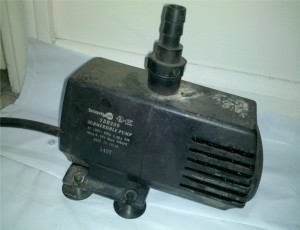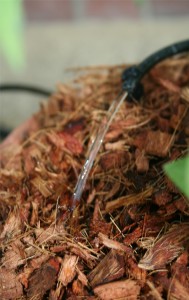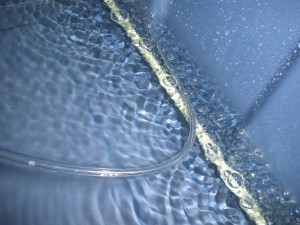 Before deciding your homemade drip system is non-functional, check your work. Did you plan the needed gallons per hour your pump would need to push water through the whole system? Water pumps are rated by GPH(Gallons per Hour). You will need to know the minimum GPH your drip system needs to pressurize the water and make it through your drip emitters.
Before deciding your homemade drip system is non-functional, check your work. Did you plan the needed gallons per hour your pump would need to push water through the whole system? Water pumps are rated by GPH(Gallons per Hour). You will need to know the minimum GPH your drip system needs to pressurize the water and make it through your drip emitters.
New growers seem to back away from home made drip systems because they are unsure of the necessary parts. Drip irrigation kits are usually over priced and come with some pretty barebones parts. The kits may also come with a small reservoir, that you are required to use because the pump is attached to it. Avoid the woes of drip system kits by making your own irrigation system at home.

Hydroponic shops carry all the parts you need to set up a custom drip system. Start with a plan. If you have not built your grow room yet, you will need to know the number of plants you plan on having and at least the distance the drip line will travel. It is important to know the distance of the drip line to calculate the power you need for your water pump.
To find out the needed GPH rating start with the length of tubing you are going to use. For every foot of tubing you use, regardless of size, subtract 1-2 GPH from the water pump’s rating. Check the packaging for the drip emitters you would like to use. The packaging should tell you the PSI rating. Take the PSI and multiply times the number of drippers. Subtract that number from the remaining GPH of the pump in question. If the number of GPH remaining is very low or negative, you need a stronger pump.
Calculating GPH for a Drip System: (2 GPH x 1 ft of tube) + (PSI rating of Drip Emitter x Number of Drip Emitters) = rough estimate of the necessary GPH. There are outside factors not mentioned in this equation. The number of connections the water has to travel through will affect the needed GPH. Bridged drip line connectors like tees and elbows can slow down your water. Be sure to wash your pump’s pre filter out during reservoir changes to ensure there is no blockage cutting down your GPH. Follow these simple guidelines to ensure you don’t buy an expensive water pump you don’t need or wind up with a less than functional drip system.

